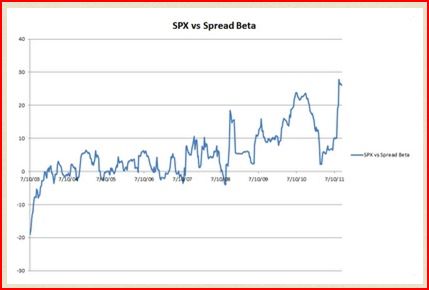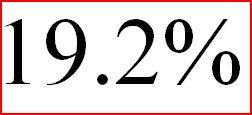Statsguy on the environmental impact of Fed/ECB policy
Here’s Statsguy from the comment section of an earlier post:
I would add only this: The Fed (and ECB) are doing tremendous STRUCTURAL damage by over-targeting (rear-looking) headline inflation. That doesn’t mean I don’t think headline inflation is important (it’s quite real, particularly if you’re in the lower income strata), but it’s counterproductive.
Why? Essentially, we’re knee-capping the economy to drop AD to bring down the price of oil (in dollars), which in a sense is SUSTAINING THE OIL INTENSITY OF THE ECONOMY to a great[er] degree than is optimal. What do I mean by that? Simply this: if the price of oil went up (relative to labor and debt), then economic actors would accelerate substitution away from oil – that is, they would substitute more people and more technology for expensive oil. INSTEAD, we’re dropping oil use not by encouraging substitution to alternatives (including increasing labor intensity, which would help with unemployment) but by preserving the current oil intensity and reducing overall consumption (including reduction of consumption of non-oil-intense products, like digital “goods”). It’s dumb.
In a sense, that Fed policy is also encouraging developing economies to move toward a more oil-intense infrastructure than would otherwise exist if oil were priced higher. It is encouraging LESS drilling, LESS technological innovation in the drilling sector, LESS demand for fuel efficient vehicles, LESS investment in alternative transportation, and WORSE city planning.
I don’t have strong views on this issue, but it’s an interesting perspective.
2. Off topic, but I was originally planning on doing a post criticizing Felix Salmon. Fortunately, David Beckworth saved me the trouble. I highly recommend the post.
3. I get frustrated with a developing argument that it’s tough to address this AD problem because inflation is unpopular. There are all sorts of flaws with this, which I have discussed elsewhere. (Opinion polls on inflation are meaningless, and in the past the public has seemed far more satisfied with a bit higher inflation and a lot more jobs.) But here’s what really frustrates me. We are letting the Fed off the hook. The Fed used the biggest debt crisis in world history as an opportunity to drive inflation (and inflation expectations) to the lowest levels in 50 years, to levels lower than their mandate, to 1% over the past three years. And all along the way Bernanke kept insisting that they had more ammo, but just didn’t think more stimulus would be appropriate. None of the recent posts claiming the Fed has a political problem because the public hates inflation have addressed this issue. I guarantee that if interest rates were 8.5%, many unions, Congressmen and business people would be demanding rate cuts right now, inflation or no inflation. The Fed is EXTREMELY lucky that 99.999% of people don’t have a clue as to how monetary policy works (beyond interest rates.)
4. Totally off topic, but Matt Yglesias’s predictions are quite similar to my own. I’m agnostic on his health cost argument, and would clarify his point that although China can grow fast for many years, the actual growth rate will likely slow somewhat. But those are my forecasts. However if they are wrong I’ll blame Yglesias, as he’s much smarter than me and should have known better.
PS. Yesterday I finally answered lots of old comments from a week back. The backlog was overwhelming. I do eventually read all the comments, and answer most. But after three years I am reaching the end of the road for these two:
A. Liberals asking how monetary policy can work when rates are zero.
B. Conservatives conceding QE2 raised inflation, but asking how more inflation can boost output.
I think I’ll just start directing people to FAQs. The blog isn’t really set up for people who don’t understand the AS/AD model. If they disagree with it fine, tell me why. But faking ignorance by claiming not to understand how nominal shocks can have real effects is very annoying.



